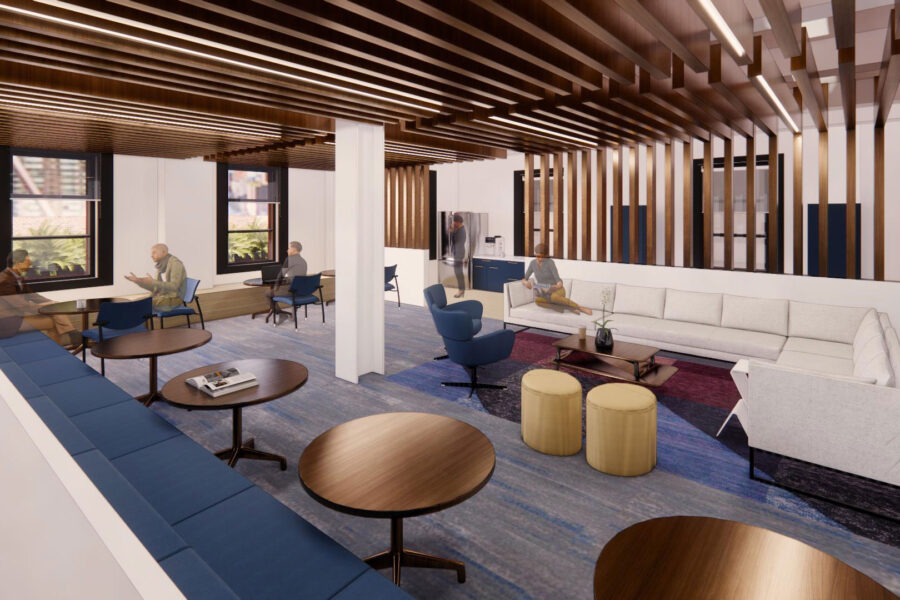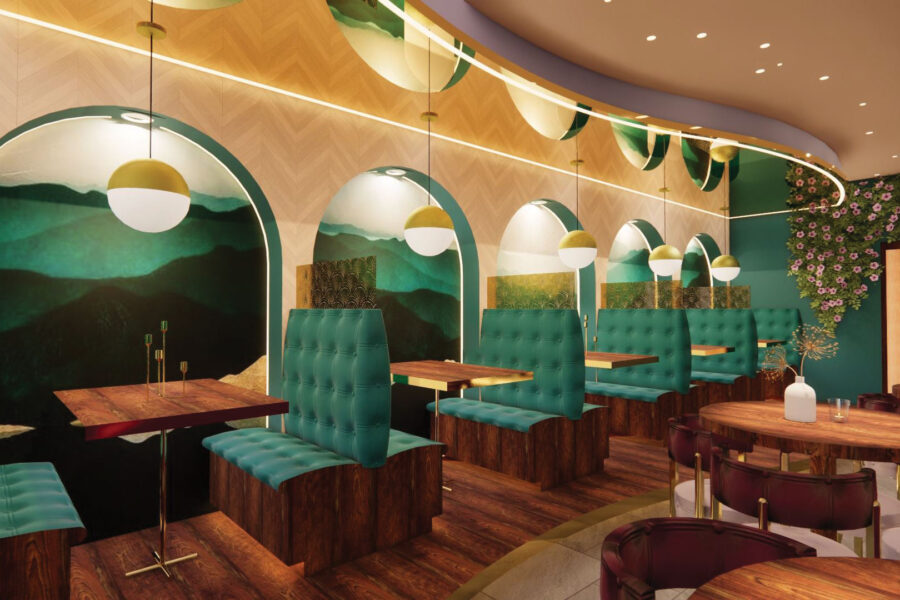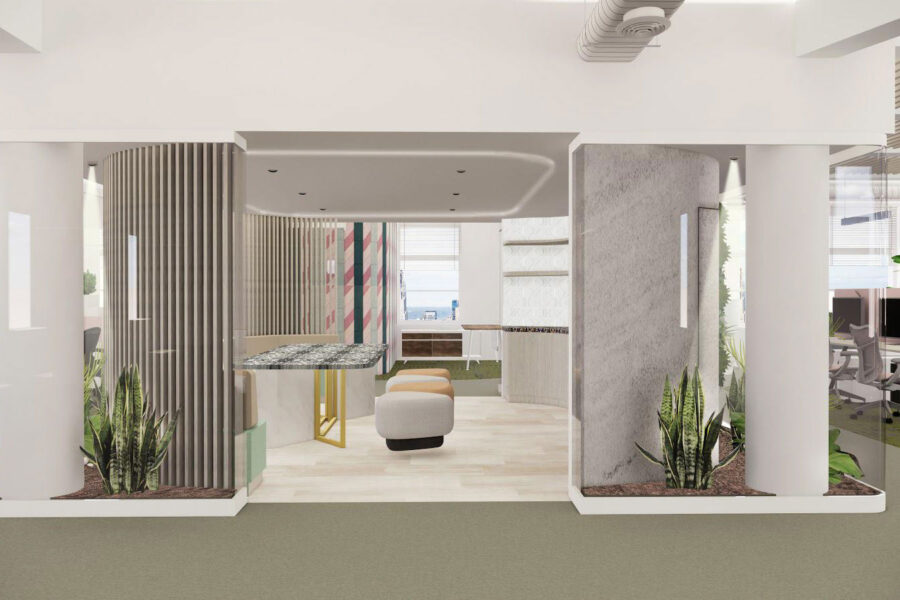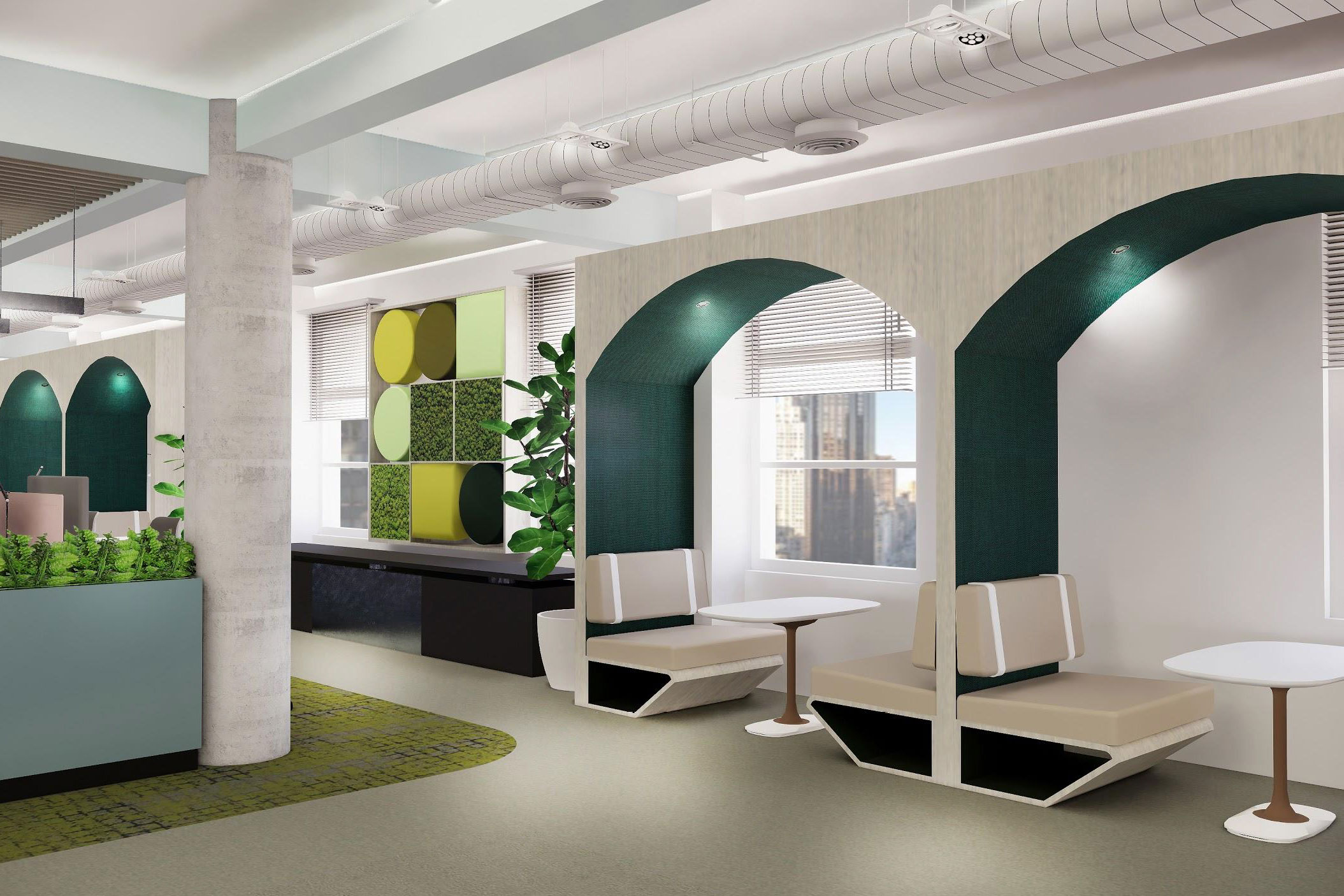Story at a glance:
- The New York School of Interior Design (NYSID)’s Master of Professional Studies in Sustainable Interior Environments program is focused on design for deconstruction and more.
- Interior design and architecture professionals from all over the world enroll in the NYSID program in-person and remotely to gain more knowledge in the field of sustainability.
David Bergman has always been interested in the environment—all the way back to when he ran his high school’s ecology club. “We called it ecology back then,” he laughs. “We did paper recycling drives, stuff like that.”
The founder of David Bergman Eco and author of Sustainable Design: A Critical Guide, Bergman is an “eco optimist” who founded the blog EcoOptimism—dedicated to the belief that positive, often symbiotic, solutions exist to our environmental and economic issues.
Today Bergman is the director of sustainability at the New York School of Interior Design (NYSID), where he oversees much of the programming, including teaching for NYSID’s Master of Professional Studies in Sustainable Interior Environments (MPSS) program. Professional students from all over the world study at NYSID—some in person, some remotely. The program is one of the leading educational programs in the industry when it comes to integrating design with sustainability.
We recently talked to Bergman—who’s also on the executive board of the NYC 2030 District and the Designers Lighting Forum of New York—about how he’s seen the industry change over the years. He shared some of his experience and insight about today’s demands and how NYSID is preparing the next generation of design professionals to provide more sustainable interiors.
What does sustainable interior design mean to you?
Let’s start by asking what it is we’re trying to sustain in sustainable design. I dislike when people say they’re trying to save the planet, because it’s a cliche, and really the planet will do just fine—maybe better—without us. What we’re really trying to do is to sustain a planet that we can survive on, or better yet, where we can flourish.
Then when we ask what sustainable interior design means, we can approach this even more selfishly, which, by the way, I don’t think is a problem because that’s often what appeals to people. It’s not just the universal or local ecosystem we’re concerned about; it’s also the number of indoor mini ecosystems we spend most of our lives in. Essentially what we’re doing is adding concerns about human health to planetary health.
How is the practice of sustainable interior design changing?
We’ve known for a long time that buildings are responsible for 40% of global energy consumption through their lifetimes. What wasn’t widely acknowledged until more recently is that the interiors of our buildings are responsible for a much larger chunk of that than was thought. That has to do with the relatively short life of many interiors versus the longer life of buildings—especially in areas like the hospitality industry, where an interior might get replaced every seven or 10 years. That’s a lot of material churn, a lot of embodied energy, and a lot of landfills.
We’ve gotten a reasonable start on improving energy efficiency of the operations of buildings, which means we now have to shift our attention to the materials, specifically interior materials, and bring those into scrutiny. We need to start thinking in terms of their embodied energy and in terms of the circular economy.
How do you address that high turnover rate in interior design?
That statistic came around a couple of years ago, and we’ve taken it very much to heart. I don’t think any of us really had numbers in front of us that showed the dramatic difference in the longevity of a building of 50 to 100 years versus an interior. You can’t point to very many interiors, except perhaps in landmark ones, that last that long. Look how frequently restaurants change over and how big the dumpsters are going out.
How can that be addressed in current training?

Student work from NYSID’s MPSS program. Rendering courtesy of NYSID
One of the big tools we’re starting to use is something called design for deconstruction; we’re designing for disassembly. The materials are put in knowing they may not stay there that long. How do we take that into account? How do we make that not a total loss? At the same time, by designing with that near future in mind, it may save the client money.
What are NYSID students looking for?
The students who are in the program already have professional degrees in interior design or architecture. Some of them have been working for a while. They’re looking now to focus on sustainability—to add that to their toolkit and be able to apply it in their work. Hopefully the degree opens doors for them.
I tell students as they’re finishing the program that maybe they’ll go into a firm that is already practicing a fair amount of sustainable design and they’ll become an asset to the team. Or maybe they’ll go into a firm that isn’t really there yet, and they can push the firm along.
What is the MPSS program providing the industry?

This work comes from NYSID students Grace Spiezia and Samantha Berlanga. Rendering courtesy of NYSID
It’s literally filling a void. I haven’t heard of any other degree programs where the sole focus is on sustainable interior environments. You’ll find a course or two in sustainability in most any architecture and interiors program, but this is designed for people who already have those earlier degrees. We do nothing but sustainable interiors.
And it’s in-person and remote?
Yes. That’s a big draw for the program. A student can participate from the classrooms here or from anywhere else in the world with a laptop simultaneously. They get exactly the same education. And that was not a Covid development; we’ve always offered this.
What are architects and designers demanding in projects these days?
Almost any design team now is looking to incorporate sustainability at some level into their projects, whether it’s because a client wants them to or because the team brings it into the picture. It’s almost a given that there’ll be some level of sustainability in any project. I think that’s very significant because it’s not only the designers promoting it; it’s the market demanding it.
With more focus on sustainability, are you seeing more sustainability-focused roles?
There are some firms that do have exactly that title—director of sustainability. It’s a specialty. For those of us in the earlier generations of this, we had to figure things out on our own. The people who are now becoming directors of sustainability or starting with a degree like this are still going to have to figure out a lot on their own, but they’ve got a big head start. There’s a lot more knowledge out there and a lot more technical expertise than there was, say, 30 years ago. That leads itself to be more easily embedded in an office.
How has that conversation changed since you were in school?
When I got out of college and grad school it was after the oil embargo. Energy prices got low and cheap again, and people suddenly didn’t care so much about sustainability, though we didn’t call it sustainability then. The firms I was working in didn’t do much about it.
In the early ’90s I started seeing really cool materials that were sustainable in varying degrees, things like wheat board that I would enjoy putting in my projects. I saw this possibility of merging good design with sustainable design that really hadn’t been that possible before. For instance, I had a secondary related company where I designed and produced light fixtures. I did that because I found these cool materials we could make fixtures out of and because compact fluorescent lighting hadn’t become any better at that point. This was long before LEDs. I saw a way to do energy-efficient lighting that looked cool. That was my stepping stone in the early mid-’90s into sustainability.
What do today’s sustainable projects look like?

Biophilic design and natural light are among the sustainable interior design elements seen in students’ work. Rendering courtesy of NYSID
The field of sustainable interior design is maturing. This is something I’ve been saying about the program and the field for a couple of years now. Not long ago a sustainable design might have meant energy efficiency or avoiding paints with VOCs. It’s now much more developed, especially in material health and how materials affect us. It’s so critical because we spend 90% of our lives indoors. All those chemicals are around us. It’s become even more critical in energy-efficient buildings because, ironically, they’re more airtight, so the cocktail of toxic chemicals in interior furnishings and materials stays inside unless the space gets mechanically ventilated. It’s great that our buildings are more insulated. It’s wonderful for energy consumption. But it’s created a secondary problem in the process.
The other thing is that now we’re getting this flood of information and data. It’s hard to understand what it means and how to apply it. When, as a designer, you’re presented with an LCA or EPD, you have to know how to interpret it, how to make comparative judgments, and how to arrive at your own decisions. That’s a big thing I emphasize in the materials course at NYSID. I tell students they have to understand what all the information is because then they’re going to make their own decisions.
How is sustainable design changing commercial projects?
If we’re talking about offices, mostly that brings in a whole additional aspect of employee productivity and efficiency. We’ve found things like daylighting and whether you have local control over the air temperature around your workstation, whether you have a good view of nature, those things can have a tremendous impact on sick days, productivity, and even employee happiness. That becomes a big value proposition to clients.
If a company has poor productivity or high turnover and they have to retrain new people, that’s a huge expense. Investing in sustainable design has a great ROI.
What do NYSID MPSS students learn?
We tackle sustainable design throughout all our BFA and MFA programs, but we really drill down into it in the MPSS because it’s the focus of our courses. We look at both the impacts and tools at our disposal in materials and lighting, mechanical systems, hard and soft goods, and the design, construction, and operation process.
Once we’ve gone through and investigated all of these we ask what’s next. We’re looking at not just what sustainable design is and how we do it, but what we need to be doing moving forward. It’s our hope that the graduates from the MPSS will become the next leaders in the field. We’re seeing that now.
Back to that idea of sustainable design allowing us to flourish—I like talking about that because people sometimes talk about sustainable design as this compromise or things we have to give up. It’s exactly the opposite in most situations. When we practice sustainable design, when we live in sustainably designed places, we live better and we can flourish as people.
When we live in sustainably designed places, we live better and we can flourish as people.
What’s changing now is that we have to simultaneously understand both the big picture and the small picture. It’s not just about specifying low-VOC paints and non-PVC flooring. We now need to be experts in so much more.
We used to practice sustainable design by a gut feeling or, in aviation lingo, flying by the seat of our pants. Now we have modern tools—something more akin to a digital cockpit, but we don’t have autopilot yet. This may be where AI comes in and helps, but who knows at this point?
How are students changing?
I’ve been teaching sustainable design at NYSID and other places for a while. One of the things I’ve noticed is the students coming into these programs—whether it’s a sustainability program or just a design program—know a lot more about sustainability now than they did 10 or 20 years ago.
I teach not just in the MPSS program but sometimes I teach first-year students, and I don’t really have to explain anymore what the greenhouse effect is. They know what fossil fuels are. They see what is happening; they’ve seen it in the news, and maybe they’ve experienced it. So we can start at a higher level.

